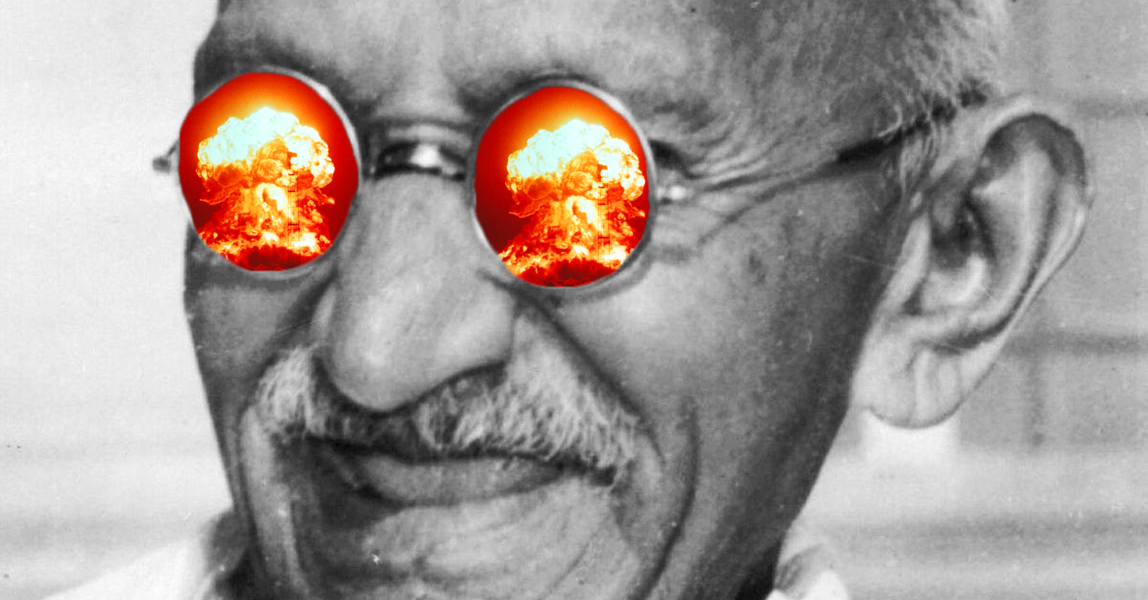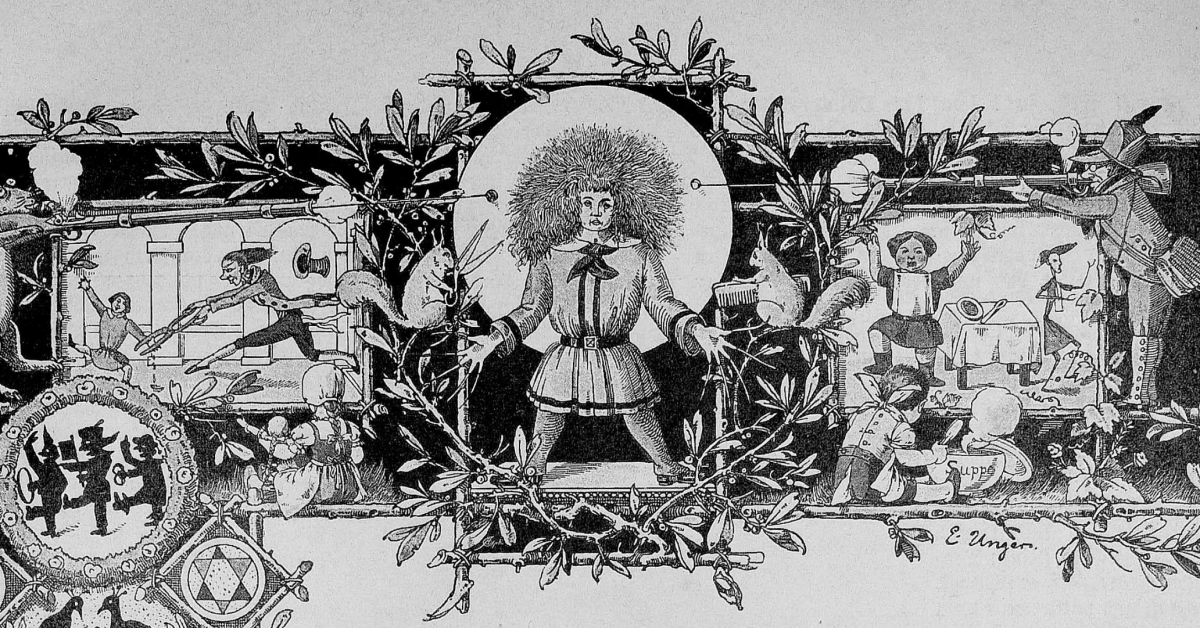This is part four of the series “The Last Chogyal of Sikkim”. Read part one here.
After years of painstaking effort, the Sikkimese opposition finally has receipts in hand for everything they’ve ever wanted: their country’s leader, the Chogyal, has formally agreed to release an arrested politician and to adopt one-man-one-vote democracy. The former is a victory for everyone who doesn’t like the idea of being locked up in a royal dungeon for your friend’s shitty opinions, the latter a triumph for the nation’s Nepali people who, despite making up three-quarters of the country’s population, only have a third of the seats in its parliament.
If you’re watching at home, the opposition’s victory seems complete. There’s no better time for a victory lap. If you’re Sikkim’s foremost opposition leader, Kazi Lhendup Dorjee, you spit on the people watching at home. What the fuck do they know? Fuck this deal and fuck the Chogyal; you’re going all in.
After tearing the deal he spent years fighting for to shreds in front of the gathered Assembly, the Kazi resumes behind-the-scenes work with his Indian allies. They’ve got a plan: You know those protests? The ones that led the Chogyal to finally give in to the opposition’s demands? Those were nothing. There’s a bigger storm coming, and it’s coming on the Chogyal’s fucking birthday.
It doesn’t come out of nowhere. Tension’s been building in Sikkim for so long that even those in the palace can feel it. The Chogyal and his wife argue about whether or not it’s safe to send their children down to the Gangtok stadium for the celebratory sports scheduled to be played there. Eventually, the king decides to cancel the games altogether.
The day itself starts normally, with the royal family celebrating according to tradition and accepting congregants at the palace. They send the normal number of invitations, but only half of the anticipated guests arrive. There’s a pervasive sense of unease. Throughout the country, people whisper about the demonstrations planned for today.
The Storm
The mob starts organizing in the further corners of southern Sikkim and builds gradually as it approaches Gangtok, overcoming three separate police stations on the way. They move fast, and by the time the formal celebrations are set to begin, they’ve descended upon the palace gates.
For the first time, calls of democracy and representation are muted; the crowd calls now for unity with India. It’s unclear where the demands started and how many of those shouting are even Sikkimese; just as before, there are rumors that many of those gathered were brought in from beyond the small country’s borders from places like Darjeeling. There’s some evidence for the claim: smallpox, mostly eradicated within Sikkim, makes a comeback.
It’s clearly not the first time the country’s opposition has gathered at the royal family’s doorstep, but this time things are different. Having shown his cards, the Chogyal has nothing more he can say to the incensed mob gathered outside his gates and remains helpless inside. Elsewhere in Gangtok, the crowd closes in on a car holding the Chogyal’s eldest son, Tenzing, and some of his friends. Accounts differ on what happens next. What’s clear is that someone within the car fires a gun, either in the air or at the ground. And maybe, according to Tenzing’s stepmother’s memoirs, the shot hits a protester in the leg. Further enraged, the crowd pounces, and it’s not until Indian forces agree to airlift them away to Delhi that their safety is guaranteed. And that safety comes at a price; from his new position in Delhi, Tenzing agrees to give interviews supporting the Indian line.
When another of the Chogyal’s sons gives a phone interview of his own from within Gangtok, he speaks vaguely about the growing threat outside his doors until he eventually places blame on the “Government of —”; the line goes dead there, the suspense straight out of a goddamn drama, but the enduring implication being that, as always, the Indian government is listening and maintaining control.
With guards literally and figuratively posted on all highways out of Sikkim, most international media stays quiet about the ongoing chaos in Gangtok. As firsthand accounts are stifled, some of the best information about the events comes from Isabelle Ritchie, the British headmistress of the local school. Like most of Gangtok’s educated, she’s well aware that Delhi’s representatives are opening her mail. The Indians responsible for censorship speak both Sikkimese and English fluently. But they don’t speak Scots, one of the native languages of Scotland. The headmistress, a born Scot, is a native speaker and uses her knowledge of the tongue to smuggle out coded messages. In one, she writes:
“‘Aiblins the fowk wi the lang nebs hae been owre eident,’” — perhaps the folks with the long noses have been over-diligent
When she can’t (or simply doesn’t care to) write in Scots, Ritchie retains her crafty use of language, reminding her mother in one letter to “have her interlineal glasses ready” (to read between the lines) and referencing briefly about the “stadium-based entertainment” that’s lasted the whole week.
The Snake
Overwhelmed, the Chogyal plays once more into the Indian plan by acquiescing and formally asking Indian forces to take control of the situation. In his eyes, the chaos has become unmanageable.
India is happy to help; they establish a temporary government as the protests they seem to have supported begin to disperse. In talks, they propose a compromise to the Chogyal: he will retain his role as monarch, albeit now as a constitutional one with limited powers, and the country will keep its communalist electoral system, the one that divvies seats equally between its three ethnic groups. For those playing along at home, something seems off: by maintaining both the Chogyal’s authority and the system of government that considerably underrepresents the Nepali majority, the Indians have cast aside the exact demands that brought them to power.
In other words, we have a conflict of imagination: the outgoing Sikkimese government envisioned the country as a Buddhist Monarchy. The opposition wants it to be a Democratic Republic. Indian ambitions, once opaque, are finally on full display; they’d prefer it not exist as a state at all, at least not as one that isn’t flying the Indian flag.
Eventually, though, the Indians too concede to the opposition’s demands and forge a new agreement with both parties, one that includes a provision for the one-man-one-vote principle. Behind the scenes, they assure the Chogyal that his position is solid. In the text of the agreement, he’s a ghost.
In the palace, the Chogyal and Gyalmo are placed in a state of essential house arrest as a character assassination campaign engulfs them. Newsweek writes a scathing piece about the New York-born queen, Hope Cooke, calling her a “Himalayan Marie Antoinette”. It’s a lofty accusation to be levied at the demure, whispering woman whose casual expenditure of royal funds seems to trail miles behind her husband’s. And to think this is the same publication that brought us such journalistic greats as the cover story “OK Millennial: Boomers are the Greatest Generation Ever”.
Still, I think I’d be remiss not to acknowledge that, as relatively limited as her spending may be, it’s still the money of the Sikkimese masses she’s exhausting, many of whom live in states of relative poverty compared to the upbringing she’s used to. One local quoted in the Newsweek piece comments “We are poor people, but we are not fools, and we know how much it takes to travel like that”.
Now in complete control, India removes the Chogyal from his secondary position as dewan and hands the Prime Minister-like role to a figure more loyal to them, Brajbir Saran Das.
Introducing Das, Andrew Duff in Sikkim: Requiem for a Himalayan Kingdom writes “When Avtar Singh, the External Affairs secretary who had once been political officer in Gangtok, returned from Gangtok on the 9th, his advice to Das was unequivocal: ‘Do not allow the Chogyal to get on top again. We will never have a second opportunity like this. 1949 should not be repeated.’”
If the writing’s not on the wall already, the Indian graffitos in Gangtok are doing everything they can to put it there. They organize new elections in 1974 with a new set of rules: this time, the Nepali community gets the same number of seats as the Bhutia-Lepcha. It’s almost half-and-half, but India’s election architects throw in one seat for monks and one for “scheduled castes”, the politically correct term for India’s untouchables, the people left off the bottom rung of that country’s historic caste system. They’re not really a thing in this country. But then again, India doesn’t really believe in “this country”.
To make matters worse for Sikkim’s loyalists, the members of the opposition, which until now has always been at least two separate political parties, agree to put aside their differences and merge one party, the Sikkim Janata Congress, into the now-dominant Sikkim National Congress. Meanwhile, the Chogyal’s National Party shatters; a breakaway hardline faction forms pretty early and the Chogyal decides at the last minute that he wants to create his own new party anyway. Having gone full Perot, the Chogyal and his allies split the loyalist vote between them and guarantee an overwhelming landslide victory for their political enemies, netting the Sikkim National Congress ninety-seven percent of the seats.
This is a rare event wherein I’ve seen no evidence of direct Indian tampering. It’s possible that fingers pressed on the scale adjusted the outcome, but it also wouldn’t be the first time a first-past-the-post electoral system led to catastrophic misrepresentation.
The Battle for the Soul of Sikkim
The Kazi opens the new Assembly’s first session by talking mad shit about the Chogyal. Once the previously-unassailable monarch is sufficiently tarred and feathered, he opens the floor for legislative action. First on his agenda: immediately breaking the recent tripartite agreement by unfurling a complex plan for the country’s future involving changing the Chogyal’s status and entrusting to the council the authority to draft a new constitution. This is the moment the Kazi’s been waiting for.
Meanwhile, the dejected Chogyal travels to Delhi to meet with Indira Gandhi. Gandhi’s attitude after their first meeting was merely non-committal, but this one comes on the heels of India’s first successful nuclear bomb test in Rajasthan. Knowing she’s just admitted her (still relatively young) country to the big boys’ club, an emboldened Gandhi informs the Chogyal that she will not halt the progress of democracy. In the months to follow, the Chogyal will attempt to schedule further meetings with the Indian Prime Minister. But Gandhi is done talking to the Chogyal.
Sikkim’s Council quickly drafts a new constitution that seems purpose-built for integration. It awards India substantial power and changes the Prime Minister’s title to “Chief Minister”, putting it in line with the heads of India’s state governments. If the USA Party took over Canada and started calling the Prime Minister “Governor” I’m sure even the most boreal Canucks would start sweating.
A new protest movement, this time against the India-aligned councilors, starts to form in Gangtok. Under the twin pressures of time and dissidence, the council drafts and passes a new constitution in a record-setting 45 minutes (Thomas Jefferson could never). To hasten the process further, they read it over once in English, a language many of their members can’t understand, and enshrine it into law via voice vote.
Afterward, some councilors come out and report having been intimidated into voting in favor of the new constitution. Their soon-to-be Indian overlords fly them out to New Delhi and flatter them into submission.
Meanwhile, in Sikkim, India counteracts the new protestors with its own regiment of paid counter-protestors. “It can’t be that easy.” You may be thinking, but you’d be wrong.
Of the whole affair, Chris Stitt, a member of the British High Commission, writes “In the long run this may well prove an expensive error since [the Sikkimese] could find they have exchanged a relatively weak if stubborn master for a much more powerful and determined one.”
To be fair, the new constitution doesn’t make Sikkim part of India; for the most part, it merely lays the groundwork for increased cooperation. But there’s one massive asterisk on all of that in Article 30, a legal backdoor that allows Sikkim to participate in India’s government institutions “if requested”. Shortly after the constitution’s passage, the Kazi requests.
Chogyal Thondup points out that the request still needs his formal approval to pass and refuses to give it. India doesn’t care. They announce intent to make Sikkim an “associate state” and, despite some infighting in the Indian parliament, plans move forward. Again, Indira Gandhi refuses to meet with the Chogyal.
Beyond the borders of both (an increasingly tenuous “both”) countries, the Chogyal’s decade spent sowing diplomatic relationships with the monarchs and governments of the world bears little fruit. The United States maintains neutrality but entertains with India the option of having China recognize Indian sovereignty over Sikkim in exchange for Indian recognition of China’s claims over the Sino-Indian disputed region of Aksai Chin.
As things continue to fall apart, the Gyalmo Hope Cooke sees the writing on the wall and, with Indian permission, escapes Sikkim and flies to New York with some of her children. She will not return to the Himalayan country she had come to call home.
Increasingly desperate and without peer, the Chogyal attends the coronation of Nepali King Barendra against Indian advice. There, he attempts to make up for years of diplomatic failures by speaking with as many international government figures as possible and audiencing privately with the new king for twice as long as any of the other attendants.
But the more things change, the more they stay the same: the Chogyal’s tunnel vision adherence to the importance of foreign affairs obstructs his view of Sikkim, where the Kazi is infuriated by his attempts to undermine his newfound authority and the Nepalese majority, many of whom are members of a political party banned by the new king, are equally angry with the Chogyal for cavorting with him.
Crosswinds
It’s hard to imagine the Chogyal caring much about the Kazi’s opinion of him, but the increasing level of control exercised by the Indians in Sikkim is about to make the Kazi care about the Chogyal. He and his wife, the Kazini, meet with the Chogyal’s eldest son, Tenzing, and broker a deal for a constitutional monarchy. Both parties leave happy, but the Indians, having set out to make themselves party to all parties, are livid. They order guards to prevent Tenzing from returning to the Kazi and Kazini’s house. When he does and finds himself barred, the Kazini tells him to jump the fence. With that obstacle cleared, the Indian house guards point rifles at him until the Kazini grabs him in a protective embrace. Confused, they lower their arms; who exactly are they protecting here?
Elsewhere in Gangtok, Delhi’s flattery campaign wears off and eighteen councilors cosign a letter to Delhi refuting the previous deal. The Indian government, taking note of the rising temperature, react through the hand of Political Officer Gurbachan Singh. Singh writes a letter to Prince Tenzing alleging that his guards found an explosive device the prince had dropped on his way out of the compound. The allegation is obviously bullshit; Singh suggests the bomb had fallen from Tenzing’s traditional kho robe, but he’d been wearing jeans. The only item he’d left behind was a felt-tipped pen. The pen is mightier than the sword, but it’s got nothing on a fucking bomb.
Having shown his government’s teeth to one half of the constitutional monarchy coalition, Singh and his men turn to the other, threatening to deport first the Kazini and then everyone who signed the letter refuting the deal. Once again, the council gives in to Indian demands.
Even with the Kazi taken care of and Prince Tenzing poorly defamed, India’s path to victory is not yet without obstacle. Two legal cases against the Indian administration gnaw at the country: one in Gangtok and one in New Delhi. The central argument of both is that the 1974 deal goes against the existing 1950 treaty that defined relations between the two countries. Putting on hold a final judgment, the Sikkimese judicial system temporarily awards in favor of Sikkim, infuriating India further.
Up until now, the Indians have closed their hands slowly, careful to paint themselves as the helpful but disinterested supporters of Sikkimese freedom fighters. Now, as their most dependable allies in Sikkim try to escape the prison they helped build, Indian forces do away with the mask entirely and prepare to finalize their plans in person.
Next time: The Fall of Sikkim
Image
- Low Light Play at Kanchenjunga by Farhan Khan






One reply on “The Battle for the Soul of Sikkim”
We couldnt save our kingdom 🙁